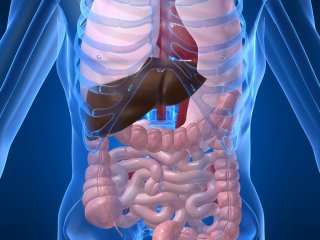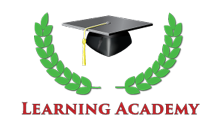
- Description
- Objectives
- Outline
- Materials
- System Requirements
- Watch a Demo
Our Anatomy and Physiology course makes the difficult concepts of anatomy and physiology clear and easier to understand. Focusing on the normal structure and function of the human body and what the body does to maintain homeostasis, our course provides students with detailed illustrations and a variety of interactive learning tools to help establish an essential foundation for success in the care of the human body. Students will examine the skin, skeletal system, muscles, nervous system, sensory organs, the endocrine system and other human body structures and functions.
Prerequisite(s): None
After completing this course, you should be able to:
- Define the basic concepts of anatomy and physiology
- Recognize how cells and organs develop and change throughout the life span
- Recall how each body system functions independently and contribute to overall function
- State basic characteristics of each organ system and how they contribute to maintaining normal body function
- Differentiate between organ systems of the body and their various functions
Anatomy & Physiology Module 1
Human Body and Chemical Level of Organization
- Overview of Anatomy and Physiology
- Structural Organization of the Human Body
- Functions of Human Life
- Requirements for Human Life
- Homeostasis
- Anatomical Terminology
- Medical Imaging
- Elements and Atoms
- Chemical Bonds and Reactions
- Inorganic and Organic Compounds Essential to Human Functioning
Anatomy & Physiology Module 2
Cellular and Tissue Organization
- Cell Membrane
- Cytoplasm and Cellular Organelles
- Nucleus and DNA Replication
- Protein Synthesis
- Cell Growth and Division
- Cellular Differentiation
- Types of Tissues
- Epithelial Tissue
- Connective Tissue Mediates Perception and Response
- Tissue Injury and Aging
Anatomy & Physiology Module 3
The Integumentary System, Bone Tissue and Skeletal System
- Layers of the Skin
- Accessory Structures of the Skin
- Functions of the Integumentary System
- Diseases, Disorders and Injuries
- Functions of the Skeletal System
- Bone Classification and Structure
- Bone Formation and Development
- Fractures: Bone Repair
- Exercise, Nutrition, Hormones and Bone Tissue
- Calcium Homeostasis
Anatomy & Physiology Module 4
Axial Skeleton and Appendicular Skeleton
- Divisions of the Skeletal System
- The Skull
- The Vertebral Column
- The Thoracic Cage
- Embryonic Development of the Axial Skeleton
- The Pectoral Girdle
- Bones of the Upper Limb
- The Pelvic Girdle and Pelvis
- Bones of the Lower Limb
- Development of the Appendicular Skeleton
Anatomy & Physiology Module 5
Joint and Muscle Tissue
- Classification of Joints
- Fibrous Joints
- Cartilaginous Joints
- Synovial Joints
- Types of Body Movements
- Development of Joints
- Skeletal Muscle
- Muscle Fiber Contraction and Relaxation
- Nervous System Control of Muscle Tension
- Cardiac Muscle Tissue
Anatomy & Physiology Module 6
The Muscular System, Nervous System and Nervous Tissue
- Interactions of the Skeletal Muscles
- Naming Skeletal Muscles
- Axial Muscles of the Head, Neck and Back
- Axial Muscles of the Abdominal Wall and Thorax
- Muscles of the Pectoral Girdle and Upper Limbs
- Structure and Function of the Nervous System
- Function of Nervous Tissue
- Action Potential
- Communication Between Nerves
Anatomy & Physiology Module 7
Anatomy of the Nervous System and Somatic Nervous System
- The Embryologic Perspective
- The Central Nervous System
- Circulation and the Central Nervous System
- The Peripheral Nervous System
- Sensory Processing
- Central Processing
- Motor Responses
Anatomy & Physiology Module 8
Autonomic Nervous System and Neurological Exam
- Divisions of the Autonomic Nervous System
- Autonomic Reflexes and Homeostasis
- Central Control
- Drugs that Affect the Autonomic System
- Overview of the Neurological Exam
- Mental Status Exam
- Cranial Nerve Exam
- Sensory and Motor Exams
- Coordination and Gait Exams
Anatomy & Physiology Module 9
Endocrine and Cardiovascular System: Blood
- Hormones
- Pituitary Gland and Hypothalamus
- Thyroid Gland
- Parathyroid Gland
- Adrenal Gland
- Pineal Gland
- Gonadal and Placental Hormones
- An Overview of Blood
- Production of the Formed Elements
- Erythrocytes, Leukocytes and Platelets
- Hemostasis
Anatomy & Physiology Module 10
Cardiovascular System: The Heart and Blood Vessels and Circulation
- Heart Anatomy
- Cardiac Muscle and Electrical Activity
- Cardiac Cycle
- Cardiac Physiology
- Development of the Heart
- Structure and Function of Blood Vessels
- Blood Flow, Blood Pressure and Resistance
- Capillary Exchange
- Homeostatic Regulation of the Vascular System
- Development of Blood Vessels and Fetal Circulation
Anatomy & Physiology Module 11
Lymphatic, Immune System and Respiratory System
- Barrier Defenses and Innate Immune Response
- Adaptive Immune System: T lymphocytes and Their Functional Types
- Adaptive Immune System: B-lymphocytes and Antibodies
- The Immune Response against Pathogens
- Diseases Associated with Depressed or Overactive Immune Responses
- Transplantation and Cancer Immunology
- Organs and Structures of the Respiratory System
- The Lungs
- The Process of Breathing
- Gas Exchange
Anatomy & Physiology Module 12
The Digestive System and Metabolism and Nutrition
- Digestive System Processes and Regulation
- The Mouth, Pharynx and Esophagus
- The Stomach
- The Small and Large Intestines
- Accessory Organs in Digestion: The Liver, Pancreas and Gallbladder
- Chemical Digestion and Absorption
- Carbohydrate Metabolism
- Lipid and Protein Metabolism
- Metabolic States of the Body
- Energy and Heat Balance
Anatomy & Physiology Module 13
The Urinary System, Fluid, Electrolyte and Acid-Base Balance
- Physical Characteristics of Urine
- Gross Anatomy of Urine Transport and Kidney
- Physiology of Urine Reformation
- Tubular Reabsorption
- Regulation of Renal Blood Flow
- Body Fluids and Fluid Compartments
- Water Balance
- Electrolyte Balance
- Acid-Base Balance
- Disorders of Acid-Base Balance
Anatomy & Physiology Module 14
The Reproductive System, Development and Inheritance
- Anatomy of the Male Reproductive System
- Anatomy of the Female Reproductive System
- Development of the Male and Female Reproductive Systems
- Fertilization
- Embryonic Development
- Fetal Development
- Maternal Changes During Pregnancy, Labor and Birth
- Adjustments of the Infant at Birth and Postnatal Stages
- Lactation
- Patterns of Inheritance
**Outlines are subject to change, as courses and materials are updated.**
Ed4Career is committed to being both environmentally conscious and making it easier for you to study! We’re making your education mobile! All of our textbooks are now provided as eTextbooks. You can access them on your laptop, tablet, or mobile device and can study anytime, anywhere.
The move away from physical books to eTextbooks means you get the latest, most up-to-date version available. This also makes your training more accessible, so you can study anywhere you have your phone or tablet. The best part is that all materials are included in your training cost so there are NO extra fees for books!
Internet Connection
- Broadband or High-Speed - DSL, Cable, and Wireless Connections
*Dial-Up internet connections will result in a diminished online experience. Classroom pages may load slowly and viewing large audio and video files may not be possible.
Hardware Requirements
- Processor - 2GHz Processor or Higher
- Memory - 1 GB RAM Minimum Recommended
PC Software Requirements
- Operating Systems - Windows 7 or higher
- Microsoft Office 2013 or higher. Also, you could use a general Word Processing application to save and open Microsoft Office formats (.doc, .docx, .xls, .xlsx, .ppt, .pptx)
- Internet Browsers - Google Chrome is highly recommended
- Cookies MUST be enabled
- Pop-ups MUST be allowed (Pop-up Blocker disabled)
- The Kindle Reader App or VitalSource Bookshelf App are needed for many of our courses (No special equipment needed. This can be downloaded for FREE onto your computer.)
- PowerPoint Viewer (if you do not have PowerPoint)
- Adobe PDF Reader
- QuickTime, Windows Media Player &/or Real Player
MAC Software Requirements
- Operating Systems - Mac OS x 10 or higher with Windows
- Mac office programs or a Word Processing application to save and open Microsoft Office formats (.doc, .docx, .xls, .xlsx, .ppt, .pptx)
- Internet Browsers- Google Chrome is highly recommended
- Cookies MUST be enabled
- Pop-ups MUST be allowed (Pop-up Blocker disabled)
- The Kindle Reader App or VitalSource Bookshelf App are needed for many of our courses (No special equipment needed. This can be downloaded for FREE onto your computer.)
- PowerPoint Viewer (if you do not have PowerPoint)
- Adobe PDF Reader
- Apple QuickTime Media Player


